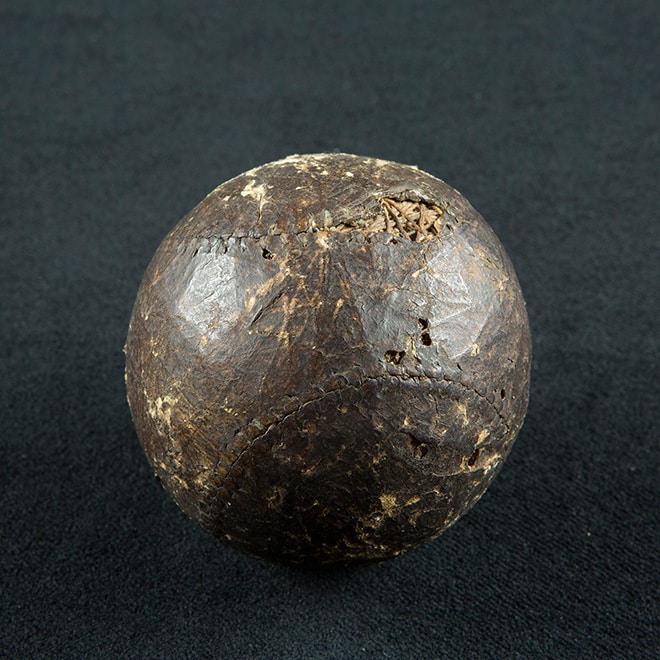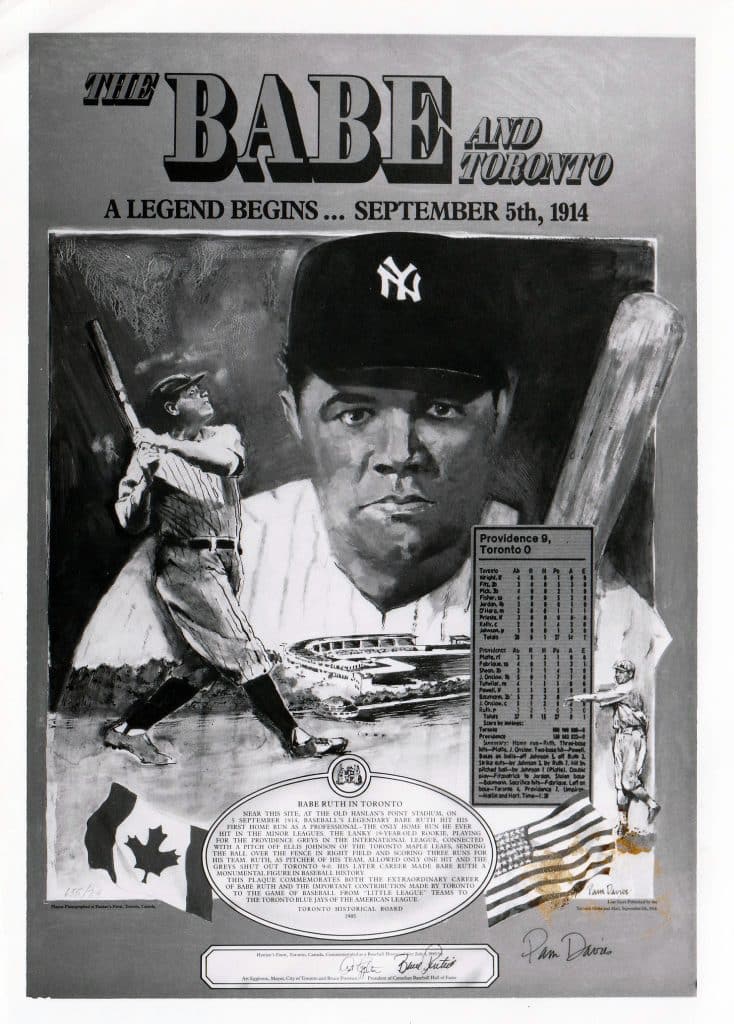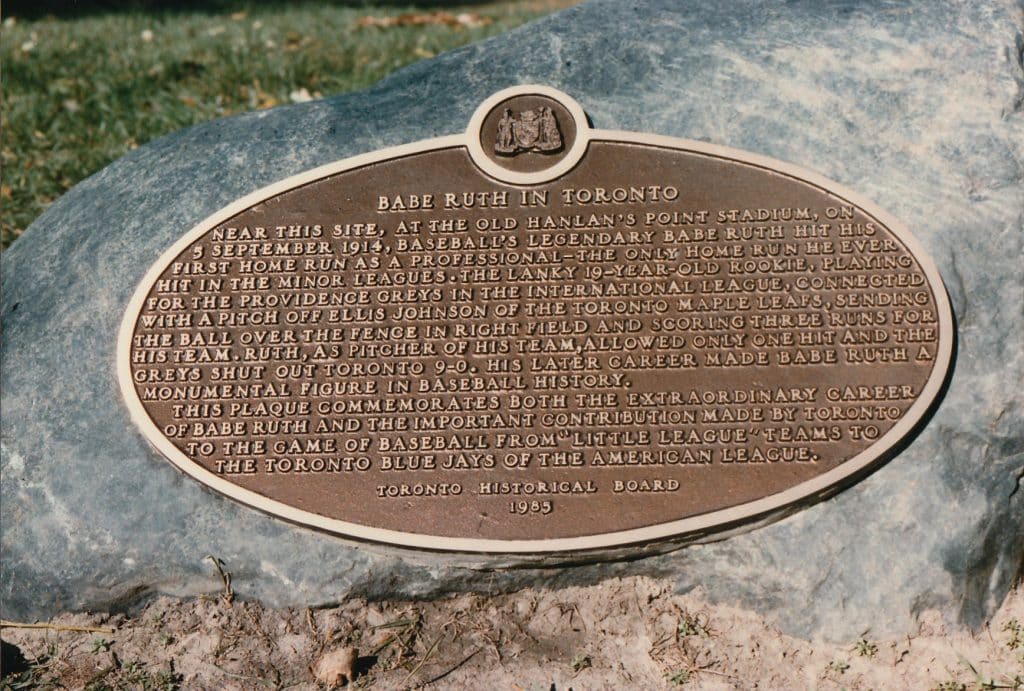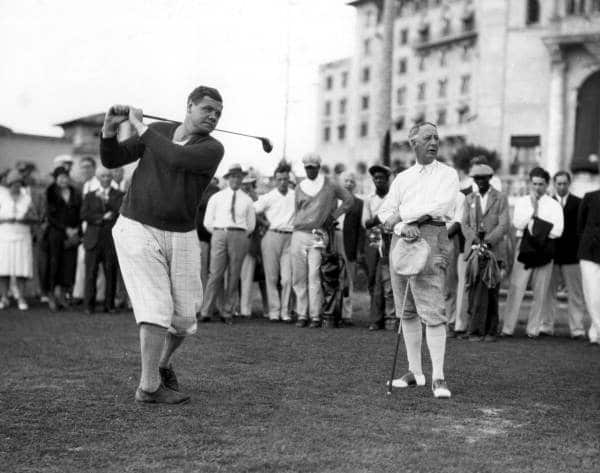The History Behind
THE BABE
Babe Ruth’s name has become synonymous with baseball over the years and there have been multiple portrayals of his story in the media. Let’s take a look at why it was that Babe Ruth became such a powerful figure in baseball history.
Movie Synopsis
Released in 1992, The Babe stars John Goodman as the famed ball player George Herman Ruth, Jr. more widely known as “Babe Ruth”. Although the movie was criticized for somewhat over-dramatizing aspects of Ruth’s life, this exhibition will explore what parts of the movie stay true to baseball history and where is that history missing.
Before the Babe
To understand why Babe Ruth made such an impact when he took to the field, it’s important to understand what baseball was like before Babe Ruth’s time. The era from about 1900 until Babe Ruth’s emergence on the Major League Baseball scene in 1919 was known as “The Dead Ball Era”. It got this name because the same ball was used for the entire game, often becoming very damaged and worn as the game went on. This wear and tear made it difficult to hit well at all – let alone achieve home runs. Instead, the game was mostly played in a style which relied on stealing bases, single hit runs, and bunting, resulting in low scoring games overall.

Pitchers had a major advantage during this time. Not only were players unable to call for a fresh ball like they can today, but the baseballs of the dead-ball era had no standardized weight or size. Some sources even claim that pitchers made their own balls. Another reason for the name “Dead Ball Era” was because these older style balls did not travel far when hit, due to the materials they were made of. It wasn’t until the 1910 World Series that some standardization was introduced. A new type of ball with cork rather than rubber at its center became popular- but even this was not always used.
Bringing Life to Dead Ball
The terms “Inside Baseball” or “Tight Baseball” were used to describe how baseball was played during the dead ball era, two descriptions that Babe Ruth would dismantle throughout his career. So, was the portrayal in The Babe of bustling crowds coming to see Babe Ruth hit home runs an exaggeration? Not at all. Attendance at major league games doubled and in some cases tripled as fans came to enjoy this new style of baseball Ruth was pioneering, where hitting hard and hitting far was the name of the game. While Babe Ruth’s home runs have become something of a legend in baseball, the story began before he was even in the Major Leagues. Although skipped over in the movie, 19 year old Babe Ruth, while playing for the Providence Grays, hit his first professional regular-season home run on September 5th, 1914. This victory was just a taste of what would come once he joined the Baltimore Orioles in 1919. The 1914 home run is an important moment to Canadian baseball fans because it took place at Hanlan’s Point in Toronto, Canada. There is a plaque at Hanlan’s Point commemorating the important historical moment.


The Babe Ruth Bat
An interesting side story to Babe Ruth, which is often overshadowed in media representations by his dramatic personal life, was his equipment. Babe Ruth was larger than most baseball players at the time, and had a special bat to match his stature. Babe Ruth’s favoured bats were Louisville Sluggers which, although their weights varied over the years, at their heaviest weighed between 38-54 ounces. Because of his larger size, Ruth was able to swing the heavier bats just as fast as other players might swing a smaller bat. However, because of the bat’s increased weight, the ball was more likely to be hit further. Today, Babe Ruth’s preferred bats are still the largest bats used in baseball history, and are highly sought after pieces of memorabilia.

After The Credits
While “The Babe” ends on a decidedly tragic note with Ruth quitting baseball and seemingly walking away forever, the reality was not so. While Ruth might have been done as a player, he was not done with baseball altogether. Ruth wanted to manage a baseball team, and put his knowledge of the sport to use. But this was not to be. Ruth’s reputation for being difficult to get along with had followed him. The closest Ruth got to managing a team was when he briefly coached the Brooklyn Dodgers in 1938. In the end, Ruth found himself having to fill his time with other activities such as golfing and bowling. He was quite talented at golf and participated in charity tournaments.

Despite what Ruth’s wife called a “boycott” of her husband by Major League Baseball, Ruth still came back for major events. Ruth spoke at Lou Gehrig Appreciation Day in 1939 and he was also present at the official opening of The National Baseball Hall of Fame in Cooperstown, where he was a member of the inaugural Hall of Fame class.
Man and Legend
Although many media representations such as “The Babe” focus on Ruth’s temper and his career downfall, they don’t credit Ruth enough for the major changes his presence made in the history of baseball, difficult personality or not. Aside from completely changing the style of the game by popularizing “power hitting”, Babe Ruth is credited as being the first real “celebrity athlete”. His popularity, although somewhat due to his controversial personal life, helped keep interest in baseball alive amid tumultuous times for both the sport and the country alike.












